Thuja western "Miriam": description, planting and care
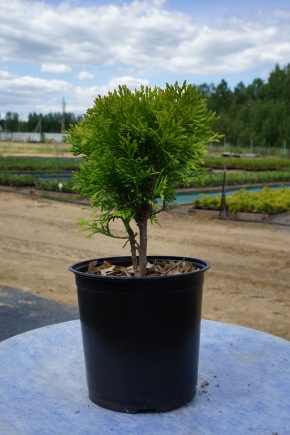
Every garden owner dreams of making it beautiful and unusual. To do this, you can use natural plantings of thuja. These plants complement various compositions, and also fill the air with a pleasant coniferous aroma.
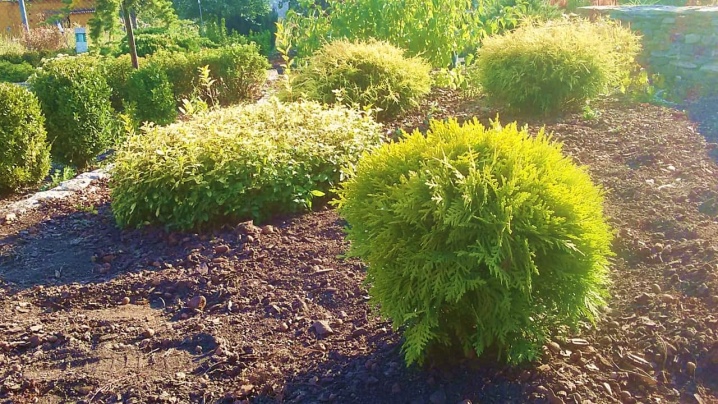
Description
Thuja western "Miriam" is an evergreen dwarf shrub with a spherical shape. This plant is characterized by its small size, it grows up to a height of 80 centimeters. Shoots grow by 5-10 centimeters annually. The needles of the shrub are thin, vertical, it has a good density and scale. In the summer, the needles are colored golden-green, in winter they are reddish-green with a bronze tint, when the warmth comes, the needles return to their previous color. The main characteristics of a low-growing shrub:
- the ability to carry the polluted and polluted air of the city;
- no exactingness to the substrate;
- good tolerance to drought, waterlogging;
- the ability to grow in a container with limited dimensions;
- slow growth;
- winter hardiness;
- excellent tolerance of topiary haircuts.
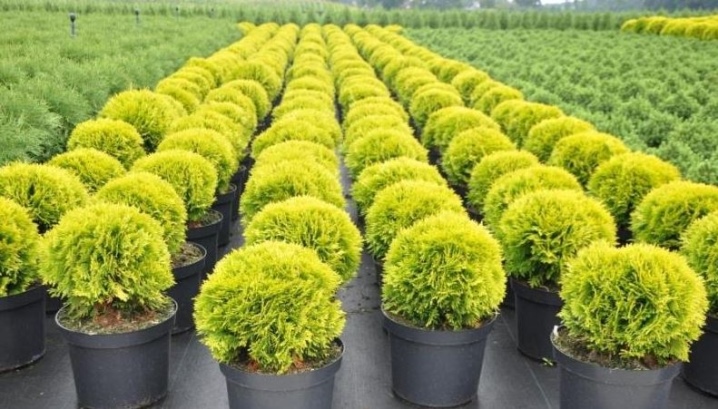
Miriam is an extremely beautiful flora. The plant has good immunity to diseases and pests. In the summer, in order to prevent thuja, it is necessary to spray with "Karbofos" or "Fundazol".
Landing
It is worth planting the western thuja in the spring, the best time for this will be May. Also, planting shrubs can be carried out in the fall in September. The best soil option in this case will be a peaty, clayey substrate or dry sandy loam. The soil for planting "Miriam" should be prepared in advance, for this it is necessary to mix the following components:
- 2 parts of sod, leafy land;
- 1 part peat;
- 1 part sand.
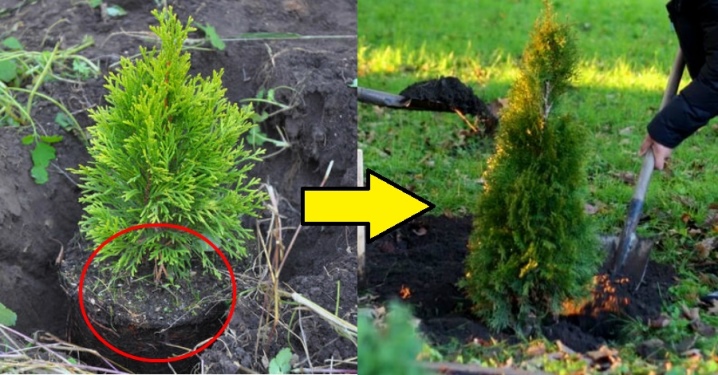
It is worth adding complex mineral fertilizers to the mixture in the amount of 5 grams per 1 liter. Alternatively, you can use a nitroammophoska, which requires 0.1 kilograms per plant species. If the soil is heavy and the groundwater is close, it is worth equipping the drainage. To do this, at the bottom of the hole, you need to lay out a 15-centimeter layer of expanded clay, gravel, and crushed brick.

It is necessary to dig a planting hole 14 days before planting. The depth of the hole should be from 0.6 to 0.8 meters, while it should be sufficient for the free location of the entire root system of the plant. In the center of the pit, thuja roots are installed along with an earthen clod, the material is sprinkled on top with a prepared substrate, tamped and watered. Do not forget that when planting a shrub, the root collar should not be buried; it should be left at ground level. It is necessary to mulch the trunk circle with peat, chips.
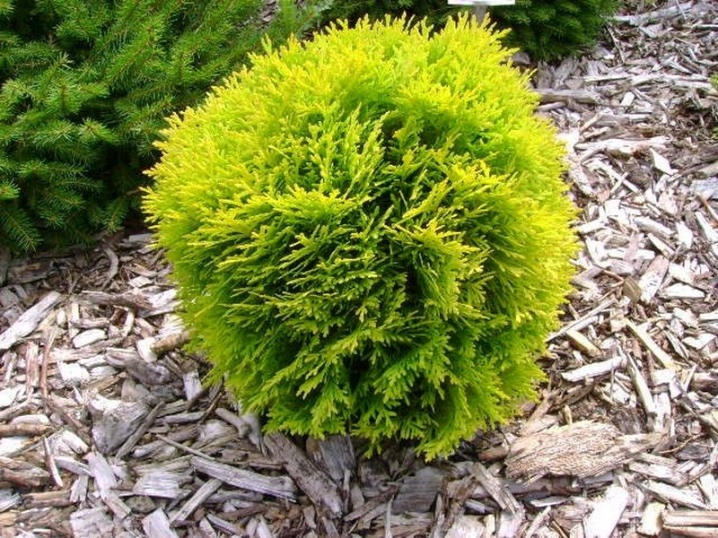
Reproduction methods
Thuja "Miriam" can reproduce in the following ways:
- cuttings;
- sowing seeds;
- using layering;
- branches.

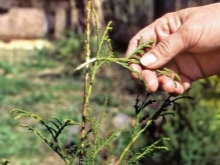
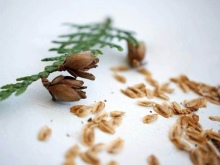
In most cases, thuja seeds are propagated by breeders. Amateur gardeners often use the cuttings method. For the planting procedure, it is worth performing a number of actions.
- In the summertime, prepare planting material. Semi-lignified petioles must be cut or abruptly torn off, leaving a material length of 0.3-0.4 meters. If the shoot is young, then its length should be about 15 cm. Heels should be present on the petioles, this contributes to good rooting of the plant.
- From each of the cuttings, it is necessary to remove the foliage from the lower levels. The shoot ends must be immersed in a wet mixture of sand and peat in equal proportions. Before carrying out this procedure, the petioles should be soaked in a growth stimulator.
- The petiole is planted in the ground at an angle of 60 degrees, deepening its tip by 3 centimeters and covering it with a film. The most comfortable temperature for rooting thuja is 23 degrees Celsius. The same procedure is applicable for branch propagation.
- The seedlings should be ventilated from time to time, and the soil should be moistened with a spray bottle. In the autumn, the greenery is covered with a polyethylene film.
- In the spring, you can start transplanting an adult shrub that is 5 years old.
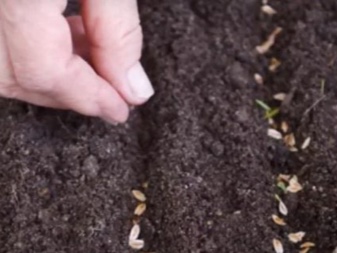
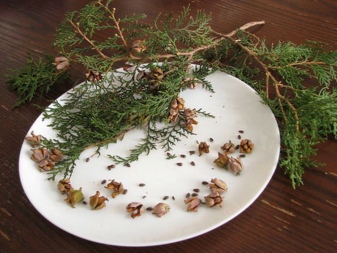
Growing and care
For 2-3 years after planting, thuja requires intensive care, which includes watering, feeding, pest and disease control, as well as preparation for the winter period. Maintaining optimal plant moisture should be followed throughout the season, as lack of moisture can cause wilting. Watering the bush, it is worth irrigating the crown, since liquid quickly evaporates from it due to excessive splendor. In a situation where watering is missed in hot weather, fruits can grow on Miriam, which will make the crown unattractive.
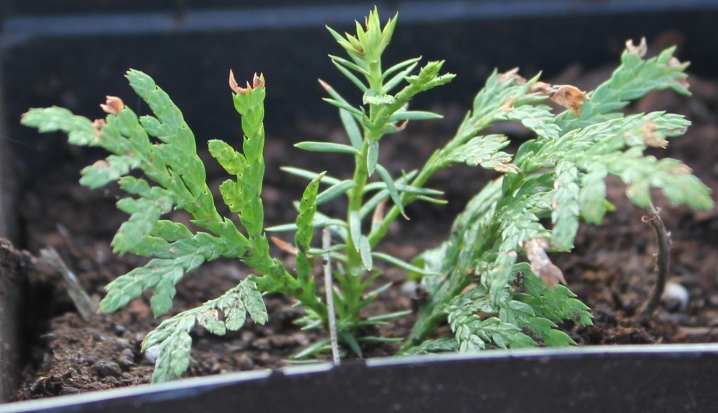
To improve the permeability of the soil, as well as eliminate the consequences of sudden temperature changes, mulching with cut grass or spruce branches can be done near the roots of the thuja. In the first days of spring, shrubs are harmed by the direct rays of the sun, which lead to burns. And in winter, snowfalls and freezing rains are fatal for the coniferous representative. In order to avoid this situation, it is worth organizing a shelter or screed from young coniferous vegetation for the cold season.
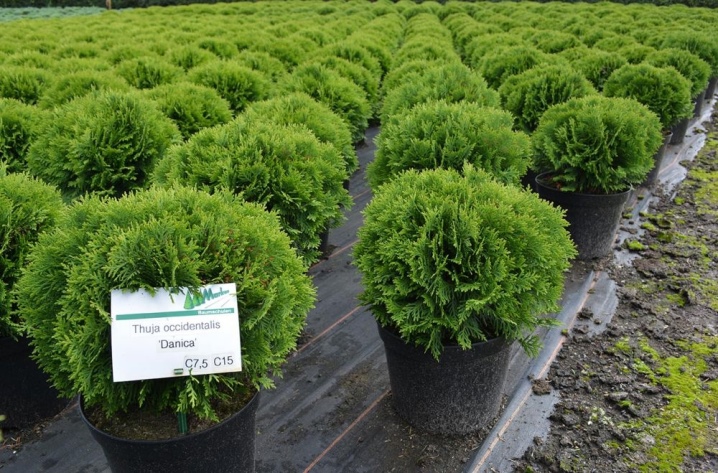
In order for the crown of the shrub to become dense and dense, it should be cut off by a third of the length. In early spring, it is recommended to carry out sanitary pruning, in which the shoots damaged in winter are eliminated. Thuja does not need growth stimulation; when feeding the shrub, it is worth observing the measure. It is not enough to apply only nitrogen-containing fertilizers, usually they feed the bush with them at the end of winter.
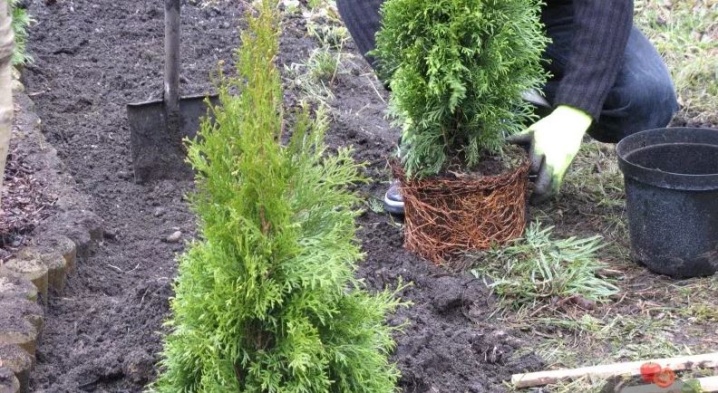
In the middle of the hottest season, Miriam can be fertilized with potash. In a situation where the plant changes its color, becoming dimmer, we can talk about a lack of phosphorus.
Diseases and pests
Western thuja is characterized by persistent immunity, however, sometimes it can be attacked by the following diseases and parasites.
- Fungal infection. Thuja can be sick with fusarium, brown shute. These ailments appear in early spring, at this time the needles of the plant may turn yellow, and the shoots may turn brown and fall off. The damaged parts of the thuja should be cut off, and sprinkle with lime on the near-stem circle. In April, it is necessary to carry out preventive spraying with Bordeaux liquid. In the summer it is worth using "Fundazol".
- Thuvaya false shield. The appearance of this pest is evidenced by the formation of spots on the shrub and the loss of its decorative qualities. In this situation, "Miriam" should be treated with "Karbofos", "Actellik". The interval between treatments should be about a week.
- Aphid. When fighting a massive plant attack by aphids, you can use "Karbofos" or "Decis".
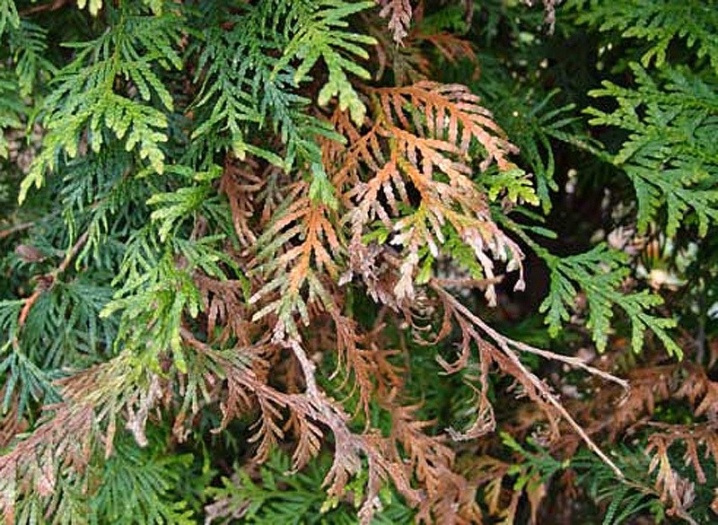
Application
Western thuja is able to fit into any design of the territory, garden, while making it lively, original and attractive. You can decorate the grass lawn with a small ephedra, while planting the shrub alone or in a group. Miriam looks effective in a mixborder, on the edge of a garden path, in a rock garden, rockery, as well as in a composition with white pebbles. Thuja is an excellent option for decorating a low hedge. It can be used for growing in open field, container.This plant can be placed on balconies, verandas, terraces. Coniferous goes well with small roses, tulips, lupins, jasmines. Miriam is also suitable for juniper, larch and spruce. Do not plant it next to peonies, dahlias, asters.
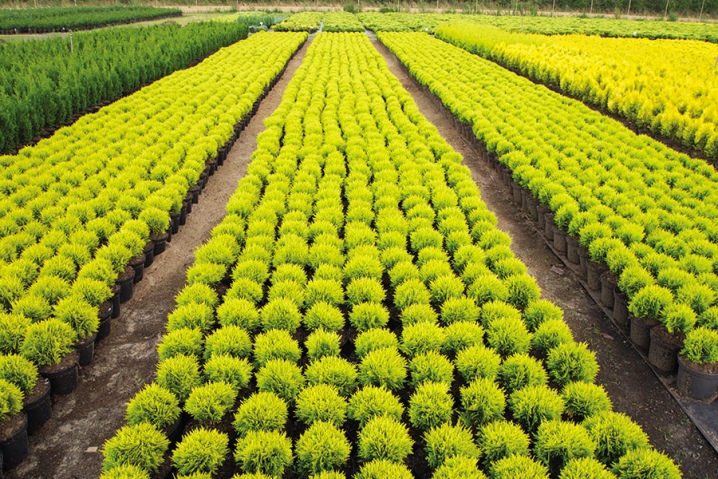
Western thuja "Miriam" is one of the favorite plants of gardeners and landscape designers. Reviews of the owners of this plant contain only positive information. The shrub is characterized by attractive appearance, uniqueness, ease of care, so even inexperienced gardeners will be able to grow it.
For information on how to properly care for the western thuja "Miriam", see the next video.



































































The comment was sent successfully.